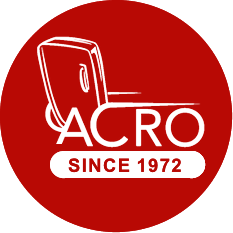Before a technician can step onto your roof, you must provide compliant anchor points or safety railing—here’s what the law (and safety) requires.
If you have air conditioning, refrigeration, or ventilation equipment mounted on your roof, chances are you’ll need technicians to access it regularly for maintenance or repairs.
But before anyone can step onto your roof, there’s a legal and safety requirement that often gets overlooked:
You, as the building owner or manager, are responsible for providing compliant roof access safety systems.
🧱 What the Law Requires
According to Australian WHS regulations and the Work at Height Code of Practice, technicians must be protected from the risk of falling whenever accessing elevated work areas, including rooftops.
To meet those requirements, the site must have at least one of the following in place:
✅ Certified roof anchor points (engineer-rated and installed to AS/NZS 5532)
✅ Compliant guard railing or walkways (AS 1657 compliant)
✅ Other engineered fall prevention systems such as static lines, cage ladders with platforms, or fall arrest-rated scaffolding
⚠️ No Anchor Points? No Roof Access.
At Acro Refrigeration, our team is trained and equipped to safely service your rooftop equipment only when a compliant safety system is in place.
If you ask a technician to access your roof without proper fall protection in place, we’ll have to decline the job on safety and legal grounds—and that protects everyone involved.
🌞 Why This Matters in Queensland
In Brisbane, the Gold Coast, and the Sunshine Coast, rooftop equipment is common due to limited ground space and ventilation design.
But the same intense UV exposure, coastal winds, and heavy rainfall that affect your equipment can also wear down safety infrastructure—especially if it hasn’t been inspected or certified recently.
That’s why regular roof safety inspections and up-to-date fall protection systems are essential.
🧱 Who Is Responsible?
The responsibility for providing compliant roof access systems falls on the property owner, building manager, or tenant who controls the site.
You don’t need to install it yourself—but you do need to engage a qualified height safety company to:
-
Assess the site
-
Design and install the correct anchor points or railings
-
Provide compliance documentation and inspection records
👷♂️ What Technicians Need
Before our technicians can access your roof, we will ask:
-
Has the roof been fitted with certified anchor points or guardrails?
-
Are there inspection records available (generally within the last 12 months)?
-
Is access safe and free from other hazards (e.g. brittle roofing, asbestos)?
If not, we can recommend a qualified roof safety provider before proceeding with service.
🔧 Case in Point:
A new Gold Coast hotel client called us urgently when their cold room failed, shutting down their restaurant. Unfortunately, we couldn’t assist immediately — their rooftop refrigeration plant had no compliant anchor points, making it unsafe and unlawful for our technician to access. They lost a full day’s trading while roof safety was arranged.
👉 This is why compliant roof access isn’t optional — it’s essential for fast, safe service.
✅ Summary
-
You must provide safe roof access if you want rooftop HVAC or refrigeration equipment serviced.
-
No compliant anchor points or railing = no roof access.
-
Acro Refrigeration is committed to worker safety and legal compliance—no exceptions.
📞 Need Help?
If you’re unsure whether your roof access meets compliance, we’re happy to connect you with trusted roof safety professionals.
- 📆 Book a Service Visit Now
- 📞 1300 227 600
- 📩 Get a Free Maintenance Quote
🔄 Stay Connected
Follow us on Facebook, or LinkedIn for the latest updates on commercial refrigeration tips and industry news.
📰 Enjoyed this article?
Browse more helpful insights and case studies on our Refrigeration Blog
